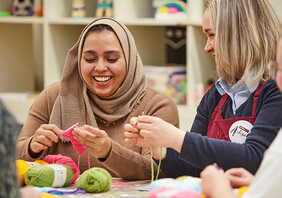2 Ways to Make Chocolate Easter Eggs
Who doesn't love a chocolate egg at Easter? Indulging yourself (or someone else) is one of the best bits about Easter, but it can get expensive sometimes - go handmade, and create something personal and get great value for money. It will make the world of difference!
You will need
Subtotal
Is $ 15.00
Subtotal
Is $ 20.00
Subtotal
Is $ 13.00
Subtotal
Is $ 6.49
Subtotal
Is $ 7.49
Subtotal
Is $ 7.49
Subtotal
Is $ 4.49
How to make
You will also need:
Easter Egg Mould
250g Milk Chocolate per Egg
100g dark chocolate (for the Personalised Brush Easter Egg)
Cotton Pads or Cotton Wool
Gloves (to prevent fingerprints)
Wash each half of the Easter egg mould and dry completely. Using a cotton pad/cotton wool, gently rub the inside of the egg mould as this will create a nice shine finish to the Easter Egg


Wash each half of the Easter egg mould and dry completely. Using a cotton pad/cotton wool, gently rub the inside of the egg mould as this will create a nice shine finish to the Easter egg

















